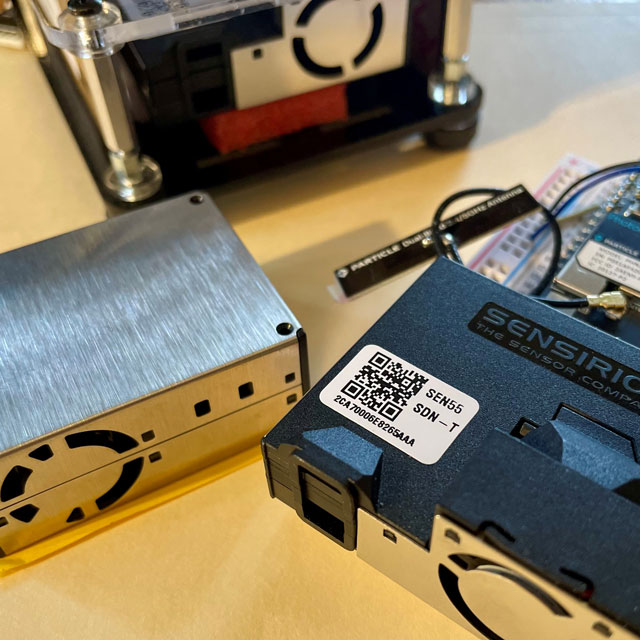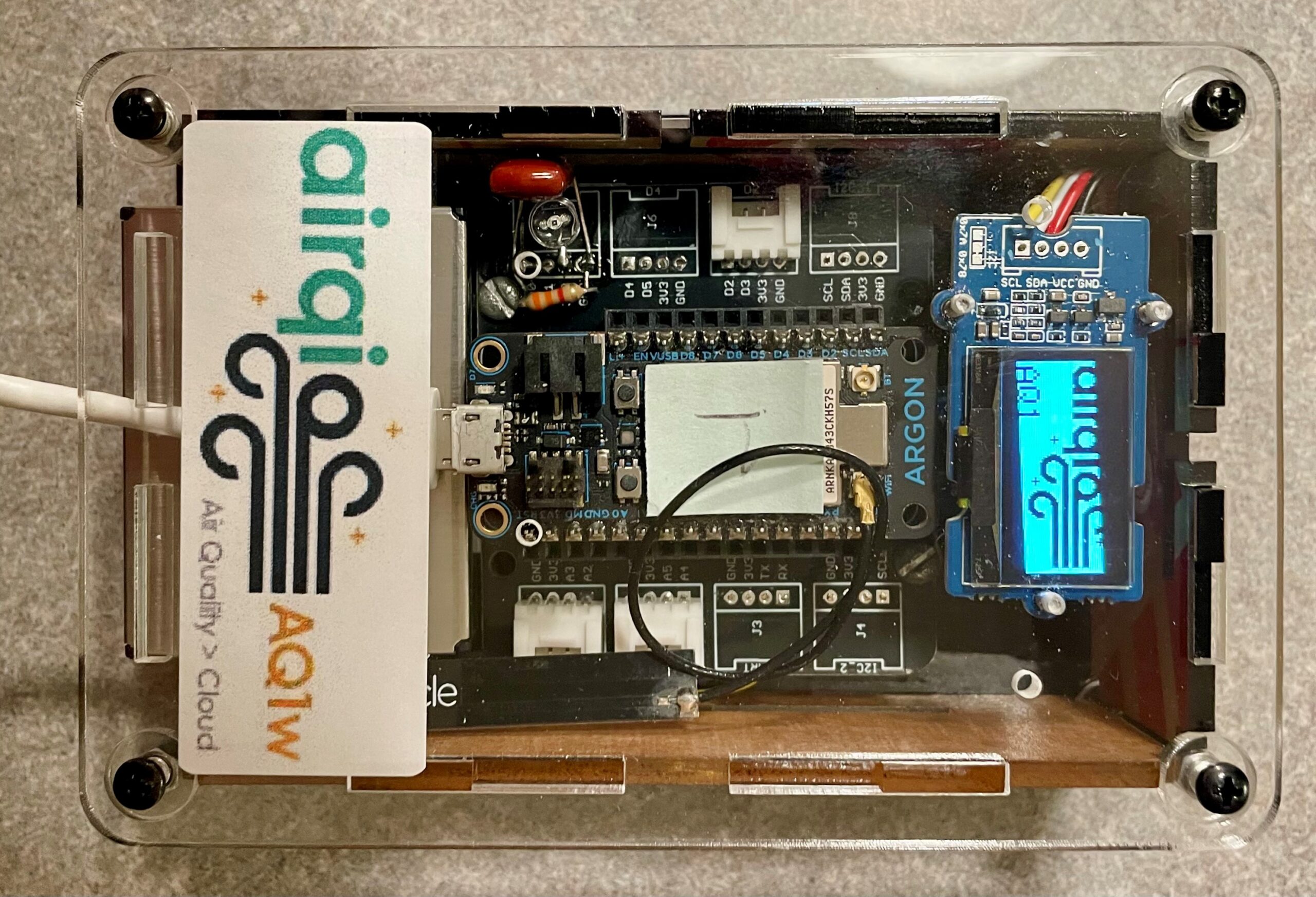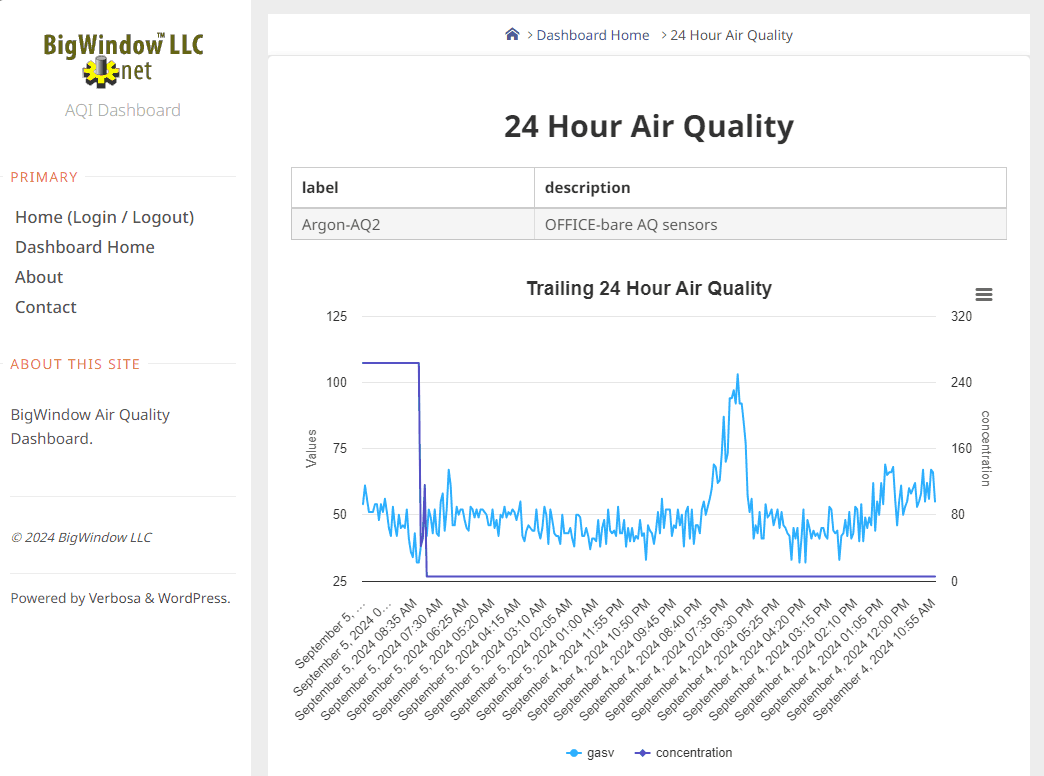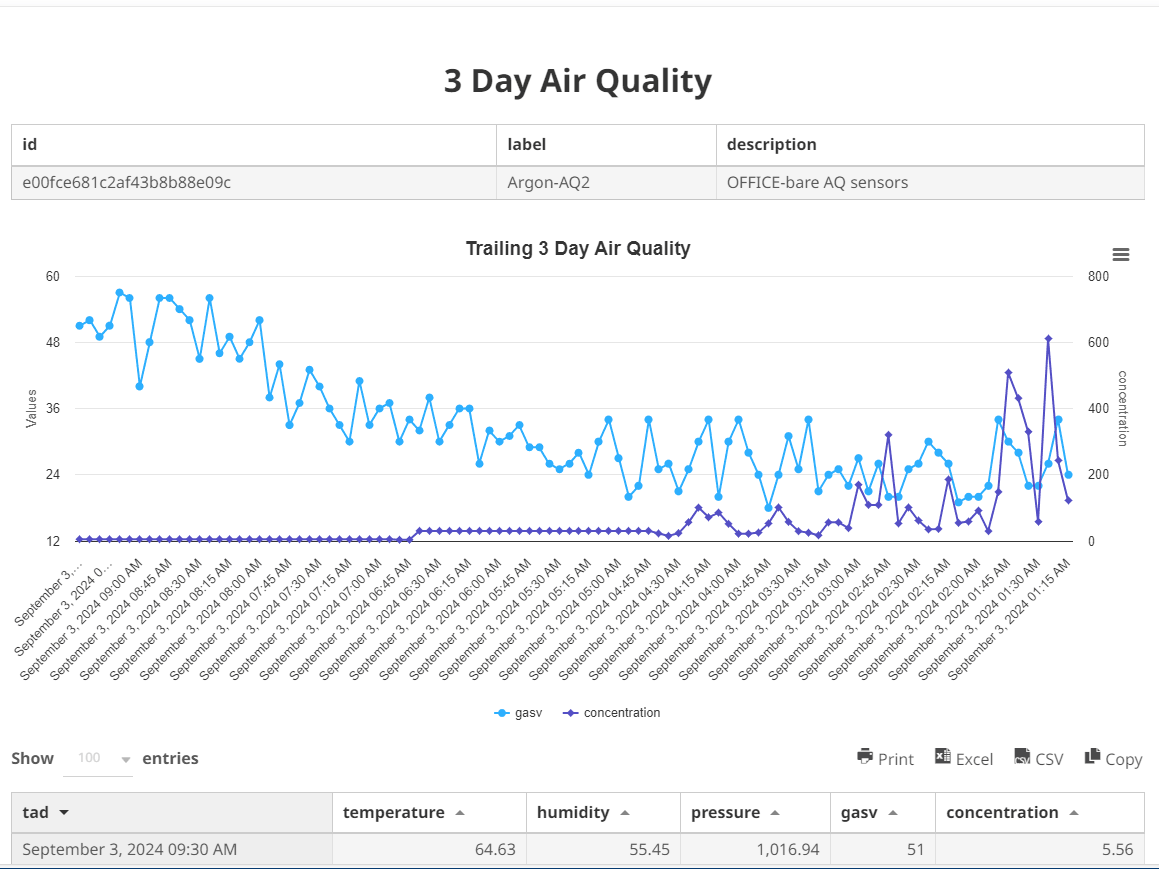Author: Randall Hertzler
-

Caveats of MOX Sensors in VOC Measurement
Metal Oxide (MOX) sensors have become a popular choice for detecting volatile organic compounds (VOCs) in indoor environments. They’re compact, low-cost, and widely integrated into consumer-grade air quality monitors. But our experience while using MOX sensors offers is that they come with a set of caveats that we need to understand before relying on them…
-

Beta Prototypes and Test
Our beta prototypes became available in January 2025. We are actively testing in several locations within the United States. One prototype has already identified a critical air quality issue providing actionable data to investigate dangerous indoor air quality. Startup VOC concentrations were over 5000 ppb! An investigation led to a malfunctioning gas boiler in the…
-

Prototype Web UI
Our initial testing uses air quality monitor hardware that streams data to the cloud at 5 minute increments. All units measure and report at these increments allowing multiple devices results to be compared at single point in time. The draft web user interface (UI) allows three peeks into the data stream: Branding of the prototype…
-

Air Quality Metrics
Typically, indoor air quality measurements include at least fine particulate matter (PM) and volatile organic compounds (VOC). More recent research suggests that carbon dioxide, CO2, is also an important marker of the air quality. Our first prototype (April 2024) measured and streamed to the cloud: PM concentration, VOC, temperature, humidity, and atmospheric pressure. Here are…
